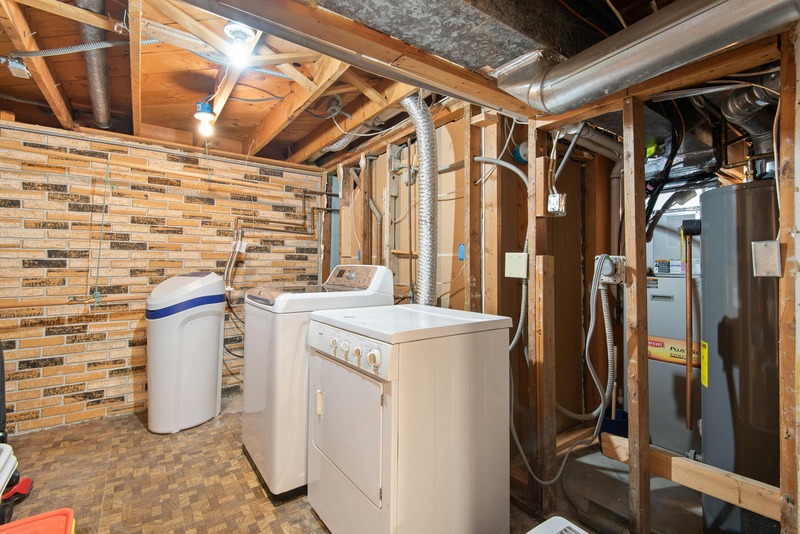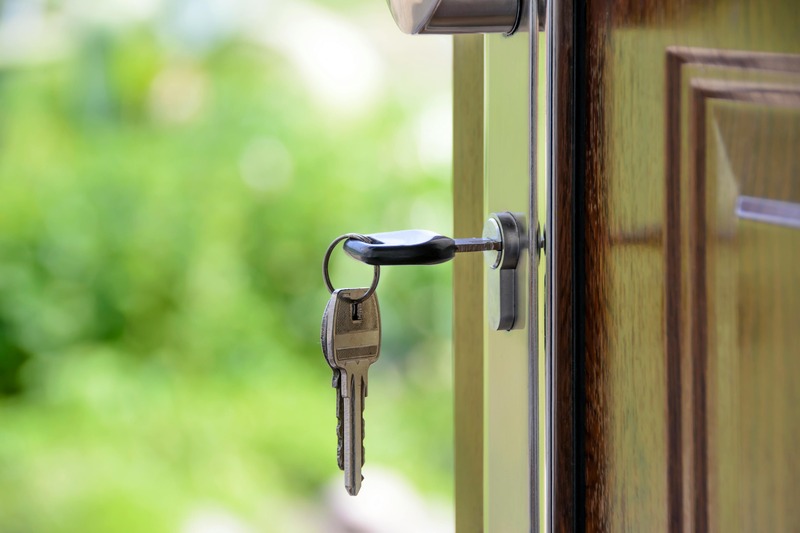
How Do Smart Meters Work?
Smart meters have or are quickly replacing old analog meters. Learn how smart meters work and what benefits they offer.
In this article:
- How Do Smart Meters Work?
- How Do Smart Meters Communicate?
- How to Read New Smart Electric Meters
- Will a Smart Meter Save Me Money?
- Smart Meter Opt-Out Policies by State
- Are Smart Meters Good for the Environment?
- Is My Smart Meter Data Protected?
- Pros and Cons of Smart Meters
- Smart Meter Technology
- Recent Posts
While smart technology did not become all the buzz until recently, devices such as smart meters have been gaining popularity in tracking energy consumption in the U.S. since 2006. In fact, according to the U.S. Energy Information Administration, smart electricity meter installations have more than doubled since 2010 with about 94.8 million smart meters installed across the residential, commercial, industrial, and transportation sectors in 2019 alone.
Number of AMI Installations by Sector, 2019
- Residential: 83,539,594
- Commercial: 10,850,866
- Industrial: 446,871
- Transportation: 1,504
- Total: 94,838,855
Source: U.S. Energy Information Administration
In addition to an increase in the volume of smart meter installations, another shift we’ve seen is away from one-way meters to two-way utility communication which is referred to as automated meter reading (AMB). Since 2013, this efficient two-way advanced metering infrastructure (AMI) model has become more common in homes and businesses across the U.S.
Unlike traditional meters, AMI sends real-time data on your electricity and gas usage to your supplier. This renders receiving estimated bills and undertaking regular manual readings unnecessary. Instead, a real-time look at your electricity usage allows total consumption values to be deconstructed into different timeframes, such as on a particular day or time of the month.
How Do Smart Meters Work?
As mentioned above, smart meters take automatic readings of your residential and commercial energy usage and deliver them wirelessly to your energy supplier. Smart meters help us understand patterns of energy consumption during peak times which can help forecast future usage — and help lower your energy bills.
No action required on your end.
Simply view the in-home display that provides information on how much energy you’re using, when, and how much it will cost. Because smart meters use a secure smart data network, these transactions do not affect your WiFi or mobile data.
How Do Smart Meters Communicate?
Smart meters communicate by way of two wireless networks: the home area network (the HAN) and the wide area network (the WAN). Like computers sync with printers, the HAN links with the devices in your home and transmits encrypted energy data to an electricity meter.
On the other hand, the WAN is similar to the secure networks that your mobile phone may use. Smart meters rely on the WAN to submit the data that informs accurate energy bills so you can better understand your energy use at home or at the office.
How to Read New Smart Electric Meters
Smart meters can show up to six displays that indicate the following data sets:
- Display 1: The display test will show “888.8.8.8” which means the LCD display is working
- Display 2: You’ll see “CLS” if the power is on and “OPN” is the power if off
- Display 3: The cumulative average is how much electricity in kilowatt-hours (kWh) has been used in the billing term
- Display 3b: The electricity demand reading is used to calculate the amount of electricity that’s being used by consumer in your service area
- Display 4: Current date in the format “MMDDYY”
- Display 5: Current time in a 24-hour clock format (i.e. 13:45 = 1:45p.m.)
- Display 6: You’ll see “CLOSEd” or “SLS” is your electric service and meter are on or “OPEn” or “OPN: is power is disconnected.
Will a Smart Meter Save Me Money?
Smart meters can save you money because they arm you with important information that affects your utility bills. These automated displays feed you the data you need to make intentional changes to your electricity usage that traditional meters would only share with the help of an electrician.
These shifts away from using electricity during peak times can put money back in your pocket. Additionally, opting for a smart meter allows you more rate options because you can choose the electricity plans that work for your home or business.
Time of use electricity plans make it possible for utility companies to apply peak and off-peak rates which can save you money. Smart meters enable regular monitoring which can improve budgets and forecasts. Keep tabs on your monthly spend and better understand how much it costs for your favorite appliances to run.
Smart Meter Opt-Out Policies by State
Smart meter opt-out policies vary by state and largely fit into four main categories: unique statewide policies, statewide opt-out policy in place, PUC case-by-case opt-out programs, and no opt-out policies in place. Here, we take a look at how utility regulators have ruled across the map.
Unique statewide policies
- New Hampshire
- Pennsylvania
Statewide opt-out policy
- California
- Maine
- Maryland
- Massachusetts
- Ohio
- Texas
- Vermont
PUC case-by-case opt-out program
- Arizona
- Florida
- Georgia
- Hawaii
- Illinois
- Indiana
- Iowa
- Kentucky
- Louisiana
- Michigan
- Missouri
- Nevada
- New Jersey
- New York
- North Carolina
- Oklahoma
- Oregon
- Rhode Island
- South Carolina
- Washington
- Wisconsin
- Wyoming
No opt-out policies
- Alabama
- Alaska
- Arkansas
- Colorado
- Connecticut
- Delaware
- Idaho
- Kansas
- Minnesota
- Mississippi
- Montana
- Nebraska
- New Mexico
- North Dakota
- South Dakota
- Tennessee
- Utah
- Virginia
- Washington, D.C.
- West Virginia
Are Smart Meters Good for the Environment?
Due to the outstanding control and communication that smart meters offer, they provide a number of environmental benefits. From reducing peak loads and integrating renewable energy sources, smart meters make significant contributions to sustainability efforts.
Studies also suggest that the transparency around real-time electricity usage that smart meters offer tends to empower consumers to reduce their energy consumption and turn off appliances in the name of saving money — and efficiency.
Is My Smart Meter Data Protected?
Because smart meters only collect and communicate data on electricity usage, your name, address, and other personal information are always protected. The biggest difference between a traditional analog meter and new smart electric meters is that the latter collects and wirelessly shares encrypted usage details more frequently — as often as every 15 minutes. But, it’s still important to safeguard consumer data with security measures that prevent unauthorized access to it.
Utility companies have partnered with the White House to initiate a risk-mitigation program known as “Green Button” that enables customers to access and safely download their smart meter data. With national standards in place to minimize external threats, smart meter data security ensures that any information collected will only be used for billing and customer service-related purposes.
Pros and Cons of Smart Meters
- Pros:
- Accurate billing
- Save money
- Easier to read electric meter
- Empowers energy efficiency
- Real-time monitoring
- Increased reliability of power delivery
- Less manual labor to determine meter readings
- Renewable energy integrations
- Helps identify faulty appliances
- Greater traffic selections
- Cons:
- Requires professional installation
- New process adoptions (data collection, reading meters, etc.)
- Additional fees
- Potential for wireless signal issues
Smart Meter Technology
Modernized electric meters are revolutionizing how residential and commercial consumers use and track their energy usage. The real-time data helps energy users understand patterns of behavior that can have a significant impact on our monthly bills and efficiency standards. From providing more accurate billing and helping to identify defective appliances, smart meters have many benefits for consumers across the U.S.
Want to learn more about reducing energy costs? Contact EnergyBot or plug in your zip code today to compare rates.
Written by Thad Warren
Thad is a native Texan who has worked in the energy industry for just over 5 years.
Connect
Recent Posts
What is considered a utility bill? Your Guide to Essential Services
Utilities help to keep your daily life comfortable and your home operable. So, what is considered a utility bill? And, what is the average cost of your monthly utility bill? In this guide we’ll break down what types of essential services make up your utility bills, how to read your bill, and strategies for reducing different utility bills.
March 2025

4 minutes

Creating Your Home Buying Budget: How much house can you afford?
Before you begin the home buying process, it’s important to take the time to understand how to budget to buy a home. In the time leading up to closing you’ll need to make smart financial decisions and save strategically for your home buying budget.
March 2025

6 minutes

Why You Need to Create a Budget: Everything You Need To Establish a Home Budget
Struggling to manage your finances? Learn how creating a household budget can help you take control of your money, reduce stress, pay off debt, and save for the future.
March 2025

6 min



